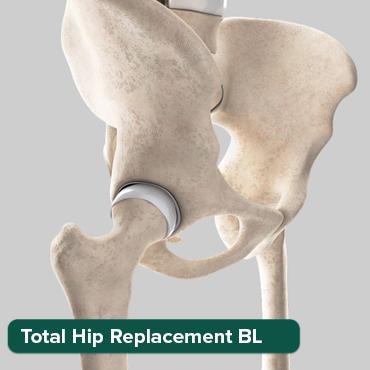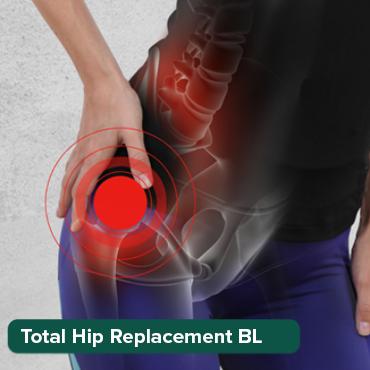
Advanced Robotic Technology Used in Spine Surgery
30 Oct, 2025
 Healthtrip
HealthtripThe Rise of Robotics in Spine Surgery
Robotic spine surgery isn't about robots replacing surgeons, but rather, it's about enhancing their capabilities, imagine a GPS for the spine, guiding surgeons with unparalleled accuracy during complex procedures; that's essentially what robotic assistance offers, the systems, such as the Mazor X Stealth Edition, provide surgeons with a 3D visualization of the patient's spine, allowing them to plan and execute procedures with greater precision than traditional methods, this translates to smaller incisions, less tissue damage, reduced blood loss, and ultimately, faster recovery times, now, you might be thinking, "Okay, that sounds great, but is it really necessary?" Well, consider the delicate nature of the spine, home to a complex network of nerves and blood vessels, traditional spine surgery often involves a degree of estimation and manual dexterity, which, while effective, can also carry a risk of complications, robotic assistance minimizes these risks by providing a higher level of accuracy and control, imagine a surgeon placing screws with millimeter precision, avoiding critical anatomical structures; that's the power of robotics, and institutions like Hisar Intercontinental Hospital are investing in these technologies to provide their patients with the best possible care, demonstrating a commitment to innovation and patient well-being.
Most popular procedures in India
Benefits of Robotic Spine Surgery
Okay, let's talk about the real game-changers: the benefits, beyond the obvious advantages of smaller incisions and faster recovery, robotic spine surgery boasts a range of improvements that can significantly impact a patient's overall experience, for starters, reduced pain, because the procedures are less invasive, patients typically experience less post-operative pain and require less pain medication, which is always a win, and then there's the reduced risk of complications, the enhanced precision of robotic systems minimizes the risk of nerve damage, misplaced implants, and other complications that can occur with traditional surgery, furthermore, robotic surgery can lead to improved long-term outcomes, the accurate placement of implants and the reduced disruption to surrounding tissues can promote better healing and stability, potentially reducing the need for future surgeries, and think of it this way: it's like building a house with laser-guided precision versus using a traditional level, you're more likely to end up with a structurally sound and long-lasting result with the former, Healthtrip partners with hospitals like LIV Hospital, Istanbul, which utilize robotic technology to deliver these enhanced benefits to their patients, because at the end of the day, it’s about getting you back to your life, feeling stronger and more confident than before.
Wellness Treatments
Give yourself the time to relax
Lowest Prices Guaranteed!

Lowest Prices Guaranteed!
Types of Spinal Conditions Treated with Robotics
Robotic spine surgery isn't a one-size-fits-all solution, but it can be applied to a variety of spinal conditions, from degenerative disc disease to scoliosis, let's break down some of the common culprits, Spinal stenosis, a narrowing of the spinal canal that can cause pain, numbness, and weakness, can be effectively treated with robotic-assisted decompression, where surgeons precisely remove bone and tissue to relieve pressure on the nerves, and then there's Spondylolisthesis, a condition where one vertebra slips forward over another, robotic surgery can aid in spinal fusion, stabilizing the spine and alleviating pain, and scoliosis, a curvature of the spine, can also be addressed with robotic assistance, allowing surgeons to accurately place screws and correct the spinal alignment, reducing pain and improving posture, and it’s not just about these common conditions; robotic surgery can also be beneficial for more complex cases, such as spinal tumors or revision surgeries, where the precision and visualization offered by robotics can be invaluable, and remember, finding the right solution for your specific condition is paramount, Healthtrip can help connect you with specialists at facilities like NMC Royal Hospital, DIP, Dubai, who can evaluate your case and determine if robotic surgery is the right option for you.
What to Expect During Robotic Spine Surgery
So, you're considering robotic spine surgery, what can you expect? First off, a thorough evaluation is crucial, your surgeon will review your medical history, conduct a physical examination, and order imaging studies, such as X-rays, MRI, or CT scans, to get a clear picture of your spinal condition, based on this information, the surgeon will develop a personalized surgical plan, utilizing the robotic system's software to map out the procedure with precision, During the surgery, the robotic arm, guided by the surgeon's movements, will assist in placing implants, removing bone, or performing other necessary procedures, the surgeon maintains complete control throughout the operation, using the robotic system as an extension of their own skills, post-operatively, you can expect a shorter hospital stay and a faster recovery compared to traditional open surgery; physical therapy will likely be a key component of your rehabilitation, helping you regain strength and mobility, and you might be wondering, is it painful? While everyone's experience is different, most patients report manageable pain levels that can be controlled with medication, and Healthtrip understands that navigating the pre- and post-operative phases can be overwhelming, that's why we offer comprehensive support to guide you through every step of the process, connecting you with top-notch hospitals like Thumbay Hospital, where you can receive personalized care and attention.
The Future of Robotic Spine Surgery
The field of robotic spine surgery is constantly evolving, with new advancements on the horizon, imagine robots that can perform even more complex tasks, such as disc replacements or nerve repairs, with greater autonomy and precision, and the integration of artificial intelligence (AI) is another exciting prospect, AI algorithms could analyze vast amounts of data to optimize surgical planning, predict potential complications, and personalize treatment strategies, and telemedicine is also playing a growing role, allowing surgeons to remotely consult with experts and even perform procedures from afar, expanding access to specialized care for patients in remote areas, and as technology continues to advance, robotic spine surgery is poised to become even more minimally invasive, more precise, and more effective, ultimately, this means better outcomes, faster recoveries, and improved quality of life for patients with spinal conditions, Healthtrip is committed to staying at the forefront of these advancements, partnering with leading hospitals and surgeons around the globe to bring you the latest and greatest in spinal care, so whether you're seeking treatment at Fortis Hospital, Noida, or exploring options at Saudi German Hospital Cairo, Egypt, Healthtrip can help you navigate the world of robotic spine surgery and find the best possible solution for your needs, because when it comes to your health, you deserve nothing less than the best.
Where is Robotic Spine Surgery Available?
Embarking on a journey to find the right medical care can feel overwhelming, especially when considering advanced procedures like robotic spine surgery. The good news is that this innovative approach is becoming increasingly accessible across the globe, offering hope and renewed mobility to many. Healthtrip is here to guide you through the landscape, connecting you with world-class facilities that offer cutting-edge robotic spine surgery. In India, esteemed institutions like Fortis Memorial Research Institute in Gurgaon, Fortis Shalimar Bagh and Max Healthcare Saket are pioneering the use of robotics in spinal procedures, offering advanced technology coupled with experienced surgeons. These hospitals boast state-of-the-art infrastructure and a commitment to patient-centric care, making them popular choices for international patients. Moving towards the Middle East, hospitals like NMC Specialty Hospital in Dubai and the Saudi German Hospital Cairo, Egypt are expanding their robotic surgery programs, bringing advanced spinal care closer to home for many in the region. These facilities combine advanced technology with internationally trained surgeons, ensuring high-quality outcomes. In Europe, you can find robotic spine surgery options at places like Quironsalud Hospital in Spain, with hospitals like Quironsalud Hospital Murcia and Jiménez Díaz Foundation University Hospital demonstrating their commitment to innovative medical solutions. Turkey also offers advanced options; for example, LIV Hospital, Istanbul provides robotic spine surgery by very qualified surgeons. Healthtrip can help you navigate these choices, providing detailed information on hospital accreditations, surgeon qualifications, and patient testimonials to help you make an informed decision. Remember, choosing the right facility is a crucial step towards a successful outcome, and we are here to support you every step of the way.
Why Choose Robotic Spine Surgery? Benefits and Advantages
When faced with spinal issues, the decision of which treatment path to take can be daunting. Robotic spine surgery, with its potential for enhanced precision and improved outcomes, is emerging as a compelling option for many. But why choose robotic spine surgery over traditional methods? One of the primary advantages lies in its precision. The robotic system provides surgeons with a high-definition, magnified view of the surgical site, allowing for more accurate placement of implants and instruments. This precision can lead to reduced risk of complications, such as nerve damage or misplacement of screws, which are critical for long-term spinal stability and pain relief. Less invasive procedures are another significant benefit. Robotic-assisted surgery often involves smaller incisions compared to traditional open surgery. This minimally invasive approach translates to less tissue damage, reduced blood loss, and a lower risk of infection. As a result, patients typically experience less post-operative pain and a faster recovery time, allowing them to return to their normal activities sooner. Furthermore, robotic spine surgery can improve surgical accuracy in complex spinal deformities. For patients with scoliosis, kyphosis, or other spinal misalignments, robotic technology provides the surgeon with better control and visualization, enabling more precise corrections and improved spinal balance. This is particularly important in achieving optimal long-term results and preventing future complications. Healthtrip understands that navigating these options can be complex, which is why we provide comprehensive information and support to help you understand the benefits of robotic spine surgery and determine if it's the right choice for you. Our team can connect you with leading surgeons and facilities that specialize in robotic spine surgery, ensuring you receive the best possible care.
Who is a Good Candidate for Robotic Spine Surgery?
Determining if you're a suitable candidate for robotic spine surgery involves considering various factors related to your specific spinal condition, overall health, and treatment goals. While robotic surgery offers numerous advantages, it’s not a one-size-fits-all solution. Generally, good candidates are individuals suffering from spinal conditions that require surgical intervention, such as degenerative disc disease, spinal stenosis, scoliosis, spondylolisthesis, or herniated discs. These conditions often cause persistent back pain, leg pain, numbness, or weakness that hasn't responded to conservative treatments like physical therapy, medication, or injections. However, the suitability also depends on the severity and complexity of the condition. For instance, patients with severe spinal deformities or those requiring multi-level spinal fusions may benefit significantly from the precision and enhanced visualization offered by robotic assistance. Furthermore, your overall health plays a crucial role. Ideal candidates are generally in good physical condition, with no significant underlying health issues that could increase the risk of complications during or after surgery. Conditions like uncontrolled diabetes, severe heart or lung disease, or obesity can affect healing and recovery, potentially making traditional surgery a safer option. A thorough evaluation by a qualified spine surgeon is essential to assess your individual circumstances and determine if robotic spine surgery is appropriate for you. This evaluation typically involves a physical examination, review of your medical history, and imaging studies like X-rays, MRI, or CT scans. The surgeon will consider your specific condition, symptoms, overall health, and treatment goals to make an informed recommendation. Healthtrip can facilitate this process by connecting you with experienced spine surgeons who specialize in robotic techniques. We understand that making the decision to undergo surgery is a significant one, and we are here to provide you with the information and support you need to make the best choice for your health and well-being.
Also Read:
How Does Robotic Spine Surgery Work? A Detailed Explanation
Robotic spine surgery, while sounding like something straight out of a sci-fi movie, is actually a very precise and controlled method of performing spinal procedures. Think of it less like a robot doing the surgery and more like a highly skilled surgeon using a sophisticated GPS system. The process typically begins with detailed preoperative planning. Using advanced imaging techniques like CT scans or MRIs, surgeons create a virtual 3D model of the patient's spine. This model allows them to meticulously plan the entire surgical procedure, including the precise placement of screws, implants, and other hardware. The planning stage is crucial, as it helps to minimize errors and optimize surgical outcomes. Once the plan is finalized, it's uploaded to the robotic system. During the surgery, the robot acts as a guiding hand, assisting the surgeon in executing the preoperative plan with exceptional accuracy. The surgeon controls the robotic arms and instruments, ensuring that all movements are precise and within the planned parameters. Real-time imaging and navigation systems provide continuous feedback, allowing the surgeon to make adjustments as needed. This level of precision is especially beneficial in complex spinal procedures, where even small errors can have significant consequences. The robot's stability also minimizes tremors, further enhancing the accuracy of the surgery. It's important to remember that the surgeon is always in control, making critical decisions and overseeing the entire process. The robot is simply a tool that enhances their capabilities, leading to more predictable and successful outcomes. This blend of human expertise and robotic precision is what makes robotic spine surgery such a promising advancement in the field.
The Surgeon’s Role: Guiding the Robot
Let’s be clear: robots aren't replacing surgeons anytime soon. The surgeon remains the captain of the ship, making all the critical decisions. The robotic system is merely an extension of their expertise, a tool that amplifies their precision and control. Before the surgery even begins, the surgeon meticulously plans every step, using advanced imaging to create a virtual roadmap of the patient's spine. This roadmap is then fed into the robotic system, which acts as a guide during the procedure. During the surgery, the surgeon controls the robotic arms, using them to precisely place screws, implants, and other hardware. The robot's movements are guided by the preoperative plan, ensuring that everything is placed exactly where it needs to be. Imagine trying to thread a needle while wearing bulky gloves – that’s kind of what traditional spine surgery can feel like. The robot acts like a steady hand, eliminating tremors and allowing for movements with millimeter precision. The surgeon also continuously monitors the patient's vital signs and makes adjustments as needed. It's a collaborative effort, with the surgeon's expertise combined with the robot's precision to achieve the best possible outcome. Think of it like a pilot using autopilot – the pilot is still in charge, but the autopilot helps to keep the plane on course. The surgeon is essential for managing any unexpected issues that may arise during surgery. This human element is critical for successful surgeries.
Examples of Robotic Spine Surgery Applications
Robotic spine surgery isn't just a futuristic concept; it's already being used in a variety of procedures to treat a wide range of spinal conditions. One of the most common applications is in spinal fusion, where the robot assists in precisely placing screws to stabilize the spine. Imagine someone with chronic back pain due to spinal instability, where the vertebrae are moving in a way they shouldn't. A robotic-assisted spinal fusion can help to lock those vertebrae in place, providing stability and reducing pain. The enhanced precision of the robot leads to better screw placement, which in turn can reduce the risk of complications and improve the chances of a successful fusion. Another area where robotic spine surgery is making a significant impact is in scoliosis correction. Scoliosis, a condition where the spine curves abnormally, often requires surgery to straighten the spine and prevent further progression. Using a robot, surgeons can precisely place screws along the spine to attach rods that will correct the curvature. The accuracy of the robot helps to minimize the risk of nerve damage and improve the overall alignment of the spine. In addition, robotic assistance is proving valuable in minimally invasive spine surgery. These procedures involve smaller incisions, leading to less pain, faster recovery times, and reduced risk of complications. The robot's precision allows surgeons to perform complex tasks through these smaller incisions, making minimally invasive surgery an option for more patients. For instance, at hospitals like Fortis Hospital, Noida and Max Healthcare Saket, India, robotic spine surgery is becoming increasingly prevalent for a variety of spinal conditions, showcasing its growing adoption and benefits. Even conditions like herniated discs or spinal stenosis, where nerves are being compressed, can be addressed with robotic-assisted techniques, offering patients a less invasive alternative to traditional open surgery.
Specific Procedures and Conditions Treated
Let's delve deeper into the specific areas where robotic spine surgery is shining. Think about spinal deformities, like scoliosis or kyphosis, where the spine curves and bends in ways it shouldn't. Correcting these deformities often involves placing numerous screws with extreme precision to realign the spine. Robotic systems offer unprecedented accuracy, ensuring that each screw is placed exactly where it needs to be, minimizing the risk of complications and maximizing the corrective effect. Spinal stenosis, a condition where the spinal canal narrows and puts pressure on the spinal cord, can also benefit from robotic surgery. Using minimally invasive techniques, surgeons can remove bone or tissue that is compressing the nerves, relieving pain and restoring function. The robot allows for precise removal of tissue, minimizing the risk of damage to surrounding structures. Similarly, for herniated discs, where the soft cushion between vertebrae bulges out and presses on a nerve, robotic surgery can be used to remove the damaged disc and relieve the pressure. In cases of spinal tumors, where abnormal growths can compress the spinal cord or nerves, robotic surgery can assist in precise tumor removal, minimizing the risk of damage to the surrounding tissues. Spinal instability, often caused by arthritis or injury, can also be addressed with robotic-assisted spinal fusion. The robot helps to precisely place screws and implants to stabilize the spine, reducing pain and improving mobility. The Saudi German Hospital Cairo, Egypt and other leading hospitals are continuously adopting these advanced techniques, paving the way for more effective and less invasive spine care for patients worldwide. The ability of robotic systems to enhance precision, minimize invasiveness, and improve outcomes is making them an increasingly valuable tool in the treatment of a wide range of spinal conditions.
Also Read:
Conclusion
Robotic spine surgery represents a significant leap forward in the treatment of spinal conditions, offering a blend of precision, minimally invasive techniques, and potentially improved outcomes. While it’s not a magic bullet, and certainly not a replacement for skilled surgeons, it provides a powerful tool to enhance their abilities and offer patients a less invasive alternative to traditional open surgery. The enhanced precision of robotic systems can lead to better screw placement in spinal fusions, more accurate correction of spinal deformities, and reduced risk of nerve damage. Minimally invasive techniques, enabled by robotic assistance, can result in less pain, faster recovery times, and reduced risk of complications. As technology continues to evolve, we can expect to see even more advanced robotic systems and techniques emerge, further expanding the possibilities of spine surgery. If you're considering spine surgery, it's definitely worth exploring whether robotic-assisted surgery is an option for you. Talk to your doctor about the potential benefits and risks, and whether you're a suitable candidate for this innovative approach. With Healthtrip, accessing information and connecting with leading hospitals like Fortis Memorial Research Institute, Gurgaon and Memorial Sisli Hospital, Istanbul that offer robotic spine surgery has never been easier. Remember, the future of spine surgery is here, and it's looking brighter and more precise than ever before.
Related Blogs

Long-Term Follow-Up After Eye Surgery
Detailed insights into eye surgery – doctors, hospitals, technology, recovery,

Healthtrip’s Transparency in Eye Surgery Pricing and Packages
Detailed insights into eye surgery – doctors, hospitals, technology, recovery,

Frequently Asked Questions About Eye Surgery
Detailed insights into eye surgery – doctors, hospitals, technology, recovery,

Advanced Robotic Technology Used in Eye Surgery
Detailed insights into eye surgery – doctors, hospitals, technology, recovery,

How Healthtrip Supports Foreign Patients for Eye Surgery in India
Detailed insights into eye surgery – doctors, hospitals, technology, recovery,

Top Medical Packages for Eye Surgery Offered by Healthtrip
Detailed insights into eye surgery – doctors, hospitals, technology, recovery,










